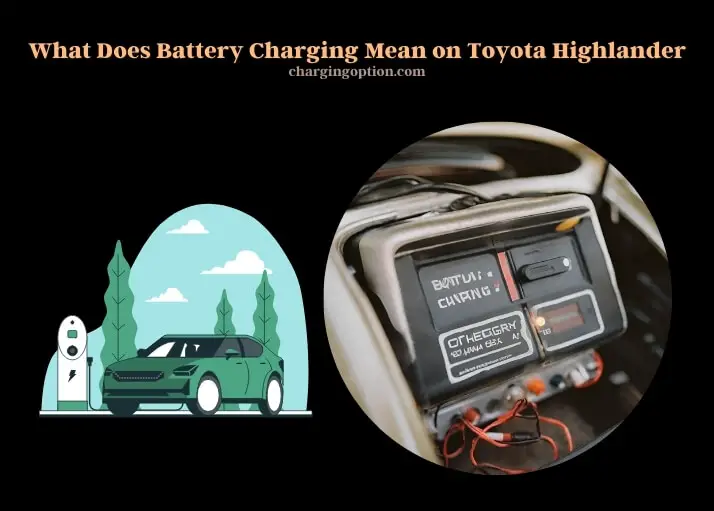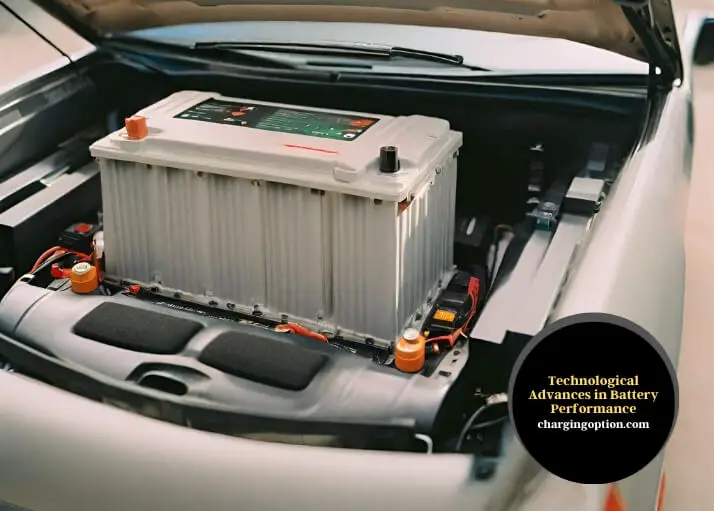Battery charging on the Toyota Highlander refers to the process of replenishing the hybrid or plug-in hybrid vehicle’s battery pack. This is essential for powering the electric motor and supporting the vehicle’s fuel-efficient operation.
In the Toyota Highlander, battery charging is achieved through several innovative methods. Regenerative braking is a key feature, where the vehicle captures kinetic energy during braking and converts it into electrical energy to recharge the battery. This process significantly enhances the efficiency of the Highlander, allowing it to conserve fuel and extend the electric-only driving range.
For plug-in hybrid models, the Highlander can also be charged via an external power source, enabling the vehicle to run on electric power alone for longer distances, further reducing reliance on gasoline and lowering emissions.

The importance of maintaining a healthy battery cannot be overstated, as it directly impacts the vehicle’s performance and longevity. Regular checks and proper charging habits help ensure the battery remains in optimal condition, contributing to the Highlander’s reliability and efficiency.
The advanced technology integrated into the Highlander’s battery charging system showcases Toyota’s commitment to innovation and environmental sustainability, making it a smart choice for eco-conscious drivers seeking a blend of performance and efficiency.
Highlander’s Battery Charging Dynamics
The Toyota Highlander’s approach to battery charging is multifaceted, incorporating several innovative technologies to ensure efficiency and longevity. At the heart of this system is regenerative braking, a feature that captures kinetic energy during braking and converts it into electrical energy to recharge the battery. This not only enhances fuel efficiency but also extends the battery’s lifespan by reducing reliance on traditional charging methods.
The Highlander’s engine plays a crucial role in charging the battery, especially during long drives where the alternator, powered by the engine, replenishes the battery. For plug-in hybrid models, external charging options provide another layer of convenience, allowing owners to charge their vehicle’s battery using standard household outlets or dedicated charging stations. This versatility ensures that the Highlander’s battery remains optimally charged, ready to deliver reliable performance and reduced emissions.
Driving Habits and Battery Longevity
Driving habits significantly influence the Toyota Highlander’s battery life. Frequent short trips can prevent the battery from fully charging, leading to a gradual decrease in capacity over time. In contrast, regular long-distance driving allows the battery to charge more effectively, maintaining its health and efficiency. The environment also plays a role; extreme temperatures, whether hot or cold, can stress the battery, impacting its performance and longevity.
Battery Maintenance for Peak Performance
Maintaining the Toyota Highlander’s battery is key to ensuring its optimal performance. Regular inspections can identify and rectify issues such as corrosion or loose connections, which might impede charging and overall battery health. Ensuring the battery is correctly charged, avoiding both undercharging and overcharging, is essential for prolonging its life and maintaining the vehicle’s performance.
Technological Advances in Battery Performance
The Toyota Highlander benefits from the latest in battery technology, utilizing advancements that enhance charging speed, capacity, and environmental sustainability. The shift towards lithium-ion batteries offers improved energy density and charging efficiency compared to traditional nickel-metal hydride batteries. These technological improvements not only boost the Highlander’s performance but also contribute to a reduction in its environmental footprint.

Indicators of Battery Health
Being aware of the Toyota Highlander’s battery health is crucial for timely maintenance and replacement. The vehicle is equipped with dashboard warning lights that alert the driver to potential battery issues. Monitoring the battery’s age and performance can help predict its lifespan, ensuring that the vehicle remains reliable and efficient.
Battery Technology Comparison
| Battery Type | Energy Capacity | Lifeness | Charging Time | Environmental Impact |
| Nickel-Metal Hydride | X kWh | Y years | Z hours | Low |
| Lithium-Ion | A kWh | B years | C hours | Moderate |
Driving Conditions and Battery Performance
| Driving Condition | Effect on Battery Life | Effect on Charging Efficiency |
| City Driving | Decrease | Lower |
| Highway Driving | Increase | Higher |
| Cold Weather | Decrease | Lower |
| Hot Weather | Moderate Decrease | Moderate Lower |
FAQs
Can Extreme Temperatures Affect Charging?
Extreme temperatures can indeed impact the charging process of a Toyota Highlander’s battery. In very cold conditions, the battery’s chemical reactions slow down, reducing its ability to accept a charge efficiently. This means it might take longer to charge the battery fully in colder weather.
In hot conditions, the battery can charge faster but at the expense of increased wear and tear. High temperatures can accelerate battery degradation by causing the electrolyte to evaporate faster than normal, which can lead to a decrease in battery life over time. It’s advisable to park the Highlander in shaded or covered areas during extreme temperatures to mitigate these effects.
What Role Does Battery Capacity Play?
Battery capacity is a critical factor in determining how long your Toyota Highlander can operate before needing a recharge. It represents the total amount of energy the battery can store at one time, measured in kilowatt-hours (kWh). A higher capacity means the vehicle can cover longer distances on electric power alone, reducing the need for gasoline and frequent recharging.
Over time, the battery’s capacity may decrease due to various factors, including age, usage, and how often the battery is charged and discharged. Monitoring and maintaining battery health is essential to preserve its capacity and, by extension, the vehicle’s performance and efficiency.
Is There a Way to Optimize Battery Charging?
Optimizing battery charging in the Toyota Highlander involves several practices to extend battery life and improve overall efficiency. One key strategy is to avoid letting the battery deplete completely before recharging. Keeping the battery level between 20% and 80% can help prolong its lifespan.
Using a timer to charge the battery during off-peak hours can not only reduce electricity costs but also benefit the electrical grid. For plug-in hybrid models, utilizing regenerative braking effectively can also contribute to optimizing the battery’s charge by converting kinetic energy back into electrical energy during deceleration.
How Does the Highlander’s Battery Affect Performance?
The battery in the Toyota Highlander significantly influences the vehicle’s performance, especially in hybrid and plug-in hybrid models. A well-maintained battery ensures smooth operation of the electric motor, providing quick acceleration and efficient power delivery. The transition between electric and gasoline power can be seamless, offering a comfortable and responsive driving experience.
A healthy battery contributes to better fuel economy by maximizing the use of electric power and reducing reliance on the gasoline engine. Regular maintenance and mindful driving habits can help maintain the battery’s health, thereby enhancing the vehicle’s overall performance.
What Happens If the Battery Is Not Charged Properly?
If the Toyota Highlander’s battery is not charged properly, it can lead to several issues. In the short term, the vehicle might experience reduced performance, including decreased acceleration and power. Over time, improper charging can significantly reduce the battery’s lifespan, necessitating an earlier replacement than expected.
It can also lead to a complete failure of the battery system, rendering the electric components of the vehicle, such as the electric motor and onboard electronics, inoperative. Ensuring the battery is charged correctly and maintaining good charging habits are crucial to avoiding these problems.
Can the Highlander Charge While Driving?
Yes, the Toyota Highlander can charge its battery while driving, primarily through a process called regenerative braking. This system captures the kinetic energy typically lost during braking and converts it into electrical energy, which is then used to recharge the battery. This feature is particularly beneficial in city driving, where frequent stopping and starting allow for more opportunities to generate and store energy.
For non-plug-in hybrid models, the vehicle’s engine also charges the battery through a conventional alternator, ensuring the battery remains charged during longer drives. This dual charging approach enhances the efficiency and convenience of driving a Highlander.
Summary
The Toyota Highlander’s battery charging system is designed with efficiency and sustainability in mind, incorporating regenerative braking, engine charging, and external charging options. Driving habits, maintenance practices, and technological advancements all play pivotal roles in optimizing battery life and performance. By understanding and responding to the indicators of battery health, owners can ensure their Highlander remains a reliable and eco-friendly vehicle for years to come.
